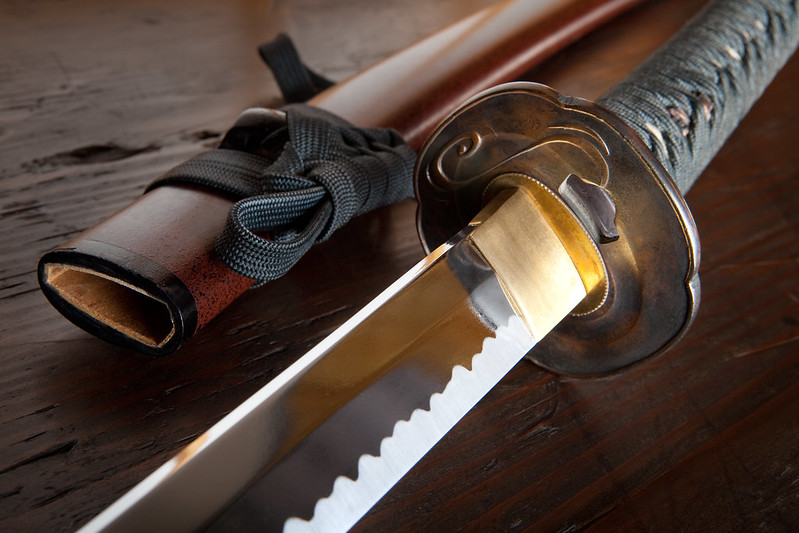
The Components of a Katana
The katana (刀) is one of the most popular types of swords in the world. It was used by the samurai class in feudal Japan and is commonly known as the samurai sword. It is defined by its characteristic curved, single-edged, razor sharp, thin blade with a rounded or square guard and long grip so it can be held with both hands. It is known for its strength and power.
Japanese swordsmithing is a labor intensive process of forging traditional Japanese bladed weapons, like the katana, that were often used by the samurai. Forging a katana sword takes many years of learning and practice and is truly an art. The utsuri, the visible natural transition that occurs between the sensitive steel and tempering that can result in the proper hardening of steel, is a much coveted facet of the katana blade.
Though the blade may be the most important part of the katana, it also has other components that add to the distinct uniqueness of the traditional Japanese sword.
Fuchi – a hilt collar between the tsuka and the tsuba.
Habaki – a wedge-shaped metal collar used to keep the sword from falling out of the saya.
Kaeshizuno – a hook-shaped fitting used to lock the saya to the obi.
Kashira – a butt cap on the end of the tsuka.
Parts of a katana. | Worldantiques
Koiguchi – the mouth, or fitting, of the saya.
Kojiri – the end of the saya.
Kozuka – a decorative handle fitting for the kogatana.
Kuri-kata – a knob on the side of the saya for attaching the sageo.
Mekugi – a small peg for securing the tsuka to the nakago.
Menuki – ornaments on the tsuka.
Mekugi-ana – holes in the tsuka and nakago for the mekugi.
Sageo – the cord used to tie saya to the belt/obi when worn.
Same-hada – the pattern of the ray skin.
Same-kawa – the ray- or shark-skin wrapping of the tsuka.
Saya – the wooden scabbard for the blade.
Seppa – washers above and below the tsuba to tighten the fittings.
Shitodome – an accent on the kurikata for aesthetic purposes.
Tsuba – a hand guard.
Tsuka – the hilt or handle, made of wood and wrapped in samegawa.
Tsuka-maki – the art of wrapping the tsuka.
Tsuka-ito – the wrap of the tsuka.
Wari-bashi – metal chop-sticks fit in a pocket on the saya.

